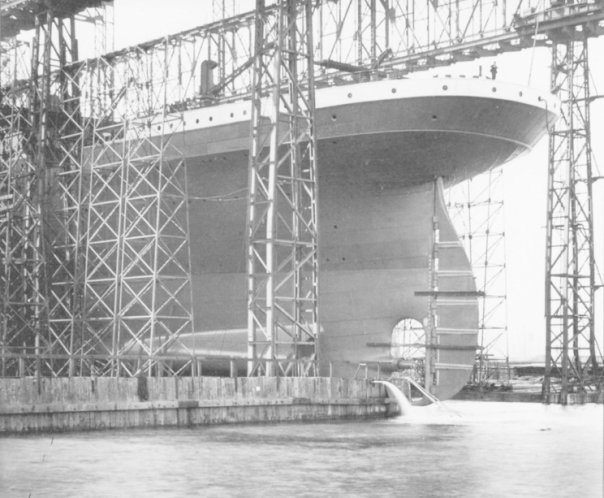

Derelict area in the Titanic Quarter (former Harland & Wolff shipyard) in Belfast where liners Titanic and Olympic where built. Titanic Quarter has proudly acquired the status as a premier global destination for leisure and business tourism. Site of the slipways where Titanic and Olympic were built (Google Maps). Opened in 2012, Titanic Belfast with its nine interactive galleries, spectacular banqueting facilities in its 750-seater Titanic Suite and extensive exhibition / education space, is redefining what Belfast means to its citizens and to the rest of the world. Titanic Belfast for hour-long discovery tours which cover Titanic-related sites outside the museum building, including the Titanic and Olympic slipways. Walk down the very slipway where Titanic was constructed and explore a life size plan of Titanic’s Promenade Deck which is inlaid in white stone. Located at the head of the slipways where Titanic and her sister ships were launched, the iconic landmark Titanic Belfast has attracted over 6 million visitors across 145 countries, earning it the prestigious accolade of the World’s Leading Tourist Attraction 2016. The Slipways Titanic Belfast stands at the head of the historic slipways where Titanic and Olympic were built and from where these famous ships were first launched into the water. With the famous Harland & Wolff Drawing Offices and the landmark Samson and Goliath Cranes as a backdrop, the Slipways bring together Belfast’s strong industrial and maritime history and Northern Ireland’s resurgent future to create a unique outdoor venue space. At the centrepiece of Belfast’s Titanic story – and Titanic Quarter itself – is Titanic Belfast, the world’s largest Titanic visitor attraction. The iconic 35,000sqm site, situated on the mouth of the river Lagan, has been restored with a design that acknowledges and respects Titanic Quarter’s unique heritage in the heart of what was once the biggest shipyard in the world.

The Titanic was equipped with a steam powered triple screw propulsion system to ensure it moved across the ocean at a respectable pace of approximately 22 knots but the blades were deliberately pitched at such an angle that the ship would not vibrate, discomfort or distract the passengers from the more elegant points of Titanic’s voyage on board when enjoying the smoking and dining rooms.The Hull would measure 882.9 ft in length and 92 feet in width and require at least 59 feet of water to float unobstructed.Conceived, designed and built in Belfast, RMS Titanic is steeped in the city’s history. The redevelopment site is on former shipbuilding land from where the Titanic and sister ship Olympic were built and launched. Made of reinforced concrete at an angle down towards the sea. The Funnels were constructed off site and attached after the Titanic had left Dry-dock. The Titanic and Olympic slipways were developed especially for the Olympic class liners. As a result, only three of the funnels were functional and the fourth was purely aesthetic. The seams of the bottom plating were double-riveted and those on the topside plating were triple and quadruple-riveted.

No expense was spared during her construction, especially where strength was concerned. 3 on 31 March 1909, three months after her sister ship, Olympic was commenced. Slipway number two, where the Olympic's hull was built, forms the Titanic Garden, with alternating grassed and paved areas sized proportionally for the numbers of survivors and victims in the three passenger classes and crew. The keel of the Titanic was laid in Slip No. White Star thought it a necessity a ship of such grandeur must possess four funnels. The Titanic Quarter also holds other important historical sites connected to Titanic: the Titanic and Olympic slipways Titanics Dock and Pump-House the. The former slipways are now paved over the former slipway number three, where the Titanic's hull was built, has the outline of the Titanic inlaid in white stone. Address: Titanic Belfast, 1 Olympic Way, Queens Road, Titanic Quarter. Thomas Andrew’s original design of the Titanic was so efficient that it was originally conceived with only three funnels to service the massive boilers some 150 feet below. Located at the head of the slipways where Titanic and her sister ships were. With all boilers firing the Titanic produced around 46,000 horsepower.


 0 kommentar(er)
0 kommentar(er)
